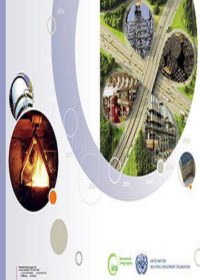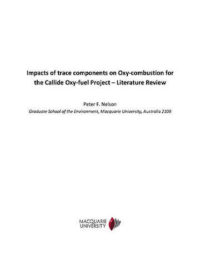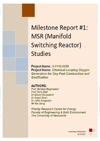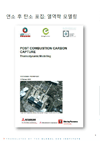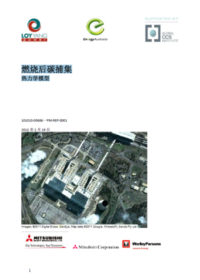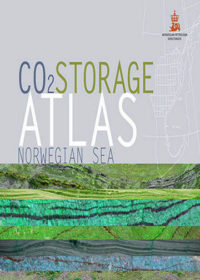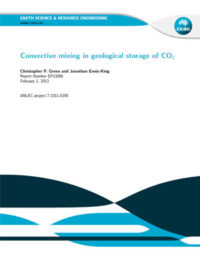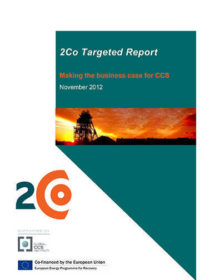Resources
Publications
Our publications, reports and research library hosts over 500 specialist reports and research papers on all topics associated with CCS.
View our Publication Library Disclaimer.
Filter by
Communications for carbon capture and storage: identifying the benefits, managing risk and maintaining the trust of stakeholders
28th February 2013
Topic(s): Carbon capture use and storage (CCUS), Public engagement
Disclaimer
The content within the Global CCS Institute Publications, Reports and Research Library is provided for information purposes only. We make every effort and take reasonable care to keep the content of this section up-to-date and error-free. However, we make no claim as to its accuracy, currency or reliability.
Content and material featured within this section of our website includes reports and research published by third parties. The content and material may include opinions and recommendations of third parties that do not reflect those held by the Global CCS Institute.
This roadmap shows that CCS is a key cost-effective option for reducing CO2 emissions in large energy-intensive industries. In fact, much of the promising short-term potential for CCS globally lies not in the power sector but in industrial activities that currently vent highly pure streams of CO2. These activities include hydrogen production for fertilisers or fuel, bioethanol production and natural gas sweetening. Most studies on the potential application of CCS have focused on the power sector, however, even though all existing operational large-scale demonstrations of CCS are in industrial applications. In the longer-term, half of the global economic deployment for CCS by 2050 is shown to be in industrial applications. In certain sectors CCS is shown to be of particular relevance in developing countries, where it could be a highly cost-competitive emissions abatement option, even in the near term.
This technology roadmap builds on the initial IEA roadmap on CCS and also the technology roadmap for the cement sector developed by the IEA and the Cement Sustainability Initiative of the World Business Council for Sustainable Development. It paves the way for low-carbon industrial growth in developed and developing countries by providing a vision of CCS in industrial applications up to 2050.
Disclaimer
The content within the Global CCS Institute Publications, Reports and Research Library is provided for information purposes only. We make every effort and take reasonable care to keep the content of this section up-to-date and error-free. However, we make no claim as to its accuracy, currency or reliability.
Content and material featured within this section of our website includes reports and research published by third parties. The content and material may include opinions and recommendations of third parties that do not reflect those held by the Global CCS Institute.
Impacts of trace components on oxy-combustion for the Callide Oxy-fuel Project: literature review
20th February 2013
Topic(s): Carbon capture use and storage (CCUS), CO2 capture
Disclaimer
The content within the Global CCS Institute Publications, Reports and Research Library is provided for information purposes only. We make every effort and take reasonable care to keep the content of this section up-to-date and error-free. However, we make no claim as to its accuracy, currency or reliability.
Content and material featured within this section of our website includes reports and research published by third parties. The content and material may include opinions and recommendations of third parties that do not reflect those held by the Global CCS Institute.
MSR (manifold switching reactor) studies
20th February 2013
Topic(s): Carbon capture use and storage (CCUS)
Disclaimer
The content within the Global CCS Institute Publications, Reports and Research Library is provided for information purposes only. We make every effort and take reasonable care to keep the content of this section up-to-date and error-free. However, we make no claim as to its accuracy, currency or reliability.
Content and material featured within this section of our website includes reports and research published by third parties. The content and material may include opinions and recommendations of third parties that do not reflect those held by the Global CCS Institute.
Post combustion carbon capture: thermodynamic modelling
19th February 2013
Topic(s): Carbon capture use and storage (CCUS), CO2 capture
Disclaimer
The content within the Global CCS Institute Publications, Reports and Research Library is provided for information purposes only. We make every effort and take reasonable care to keep the content of this section up-to-date and error-free. However, we make no claim as to its accuracy, currency or reliability.
Content and material featured within this section of our website includes reports and research published by third parties. The content and material may include opinions and recommendations of third parties that do not reflect those held by the Global CCS Institute.
본 보고서는 연소 후 포집(Post Combustion Capture, PCC) 기술 개조가 발전소 성능에 미치는 영향과 그 투입값에 관한 독자적인 검증법을 제공한다. 이는 미개발 구역에서 이미 적용되는 방식이며, 시설 운영 시 성능 리스크 평가와 잠재적 수익 파악의 근거를 파악한다. 보고서에서는 방법론 전개 및 설명을 위해 Loy Yang A 발전소에 5000 tpd PCC를 장착한 사례를 연구하고 거기에서 도출되는 결론을 제시할 것이다.
본 보고서에서 제시하는 방법론 및 결론은 CCS 포집 기술 전문가가 심도있게 검증한 것으로, 성능 자료를 제시하고 기술 공급업체의 지적재산권을 보호하는 동시에 프로젝트 평가 시 CCS 업계에 충분한 신뢰감을 주는 타당한 접근 방식이라는 평을 받았다.
Disclaimer
The content within the Global CCS Institute Publications, Reports and Research Library is provided for information purposes only. We make every effort and take reasonable care to keep the content of this section up-to-date and error-free. However, we make no claim as to its accuracy, currency or reliability.
Content and material featured within this section of our website includes reports and research published by third parties. The content and material may include opinions and recommendations of third parties that do not reflect those held by the Global CCS Institute.
该报告提供了对改造燃烧后碳捕集(PCC)发电厂性能的影响和监管进行独立验证的方法。该方法学也可以适用于新建站点。它也将提供运行风险的价值和影响设施运营的潜在收入的基础。
重要的是,在本报告描述的方法学和结果已被一位知名的CCS捕集技术专家进行了专家审查,这位专家发现该方法学在提供性能数据和保护技术提供者知识产权上有一套健全的处理方法,同时能在评估项目中对更广泛的CCS同行提供充分的依据。
Disclaimer
The content within the Global CCS Institute Publications, Reports and Research Library is provided for information purposes only. We make every effort and take reasonable care to keep the content of this section up-to-date and error-free. However, we make no claim as to its accuracy, currency or reliability.
Content and material featured within this section of our website includes reports and research published by third parties. The content and material may include opinions and recommendations of third parties that do not reflect those held by the Global CCS Institute.
Thematic report: Public engagement session October 2012
15th February 2013
Topic(s): Carbon capture use and storage (CCUS), Public engagement
This report presents the discussions and conclusions reached at a workshop of the European CCS Demonstration Project Network in September 2012 – examining the messaging, tools used and the language used to communicate about CCS. This report seeks to complement and follow on from the report from May 2012 by the same group, which examined the perceived risks and stakeholder profiles that these messages, and messengers, serve and address.
Disclaimer
The content within the Global CCS Institute Publications, Reports and Research Library is provided for information purposes only. We make every effort and take reasonable care to keep the content of this section up-to-date and error-free. However, we make no claim as to its accuracy, currency or reliability.
Content and material featured within this section of our website includes reports and research published by third parties. The content and material may include opinions and recommendations of third parties that do not reflect those held by the Global CCS Institute.
CO2 storage atlas: Norwegian Sea
5th February 2013
Topic(s): Carbon capture use and storage (CCUS), CO2 storage
Disclaimer
The content within the Global CCS Institute Publications, Reports and Research Library is provided for information purposes only. We make every effort and take reasonable care to keep the content of this section up-to-date and error-free. However, we make no claim as to its accuracy, currency or reliability.
Content and material featured within this section of our website includes reports and research published by third parties. The content and material may include opinions and recommendations of third parties that do not reflect those held by the Global CCS Institute.
Deliver CCS demonstration, enable widespread deployment
4th February 2013
Topic(s): Carbon capture use and storage (CCUS)
Disclaimer
The content within the Global CCS Institute Publications, Reports and Research Library is provided for information purposes only. We make every effort and take reasonable care to keep the content of this section up-to-date and error-free. However, we make no claim as to its accuracy, currency or reliability.
Content and material featured within this section of our website includes reports and research published by third parties. The content and material may include opinions and recommendations of third parties that do not reflect those held by the Global CCS Institute.
Convective mixing in geological storage of CO2
1st February 2013
Topic(s): Carbon capture use and storage (CCUS), CO2 storage
Disclaimer
The content within the Global CCS Institute Publications, Reports and Research Library is provided for information purposes only. We make every effort and take reasonable care to keep the content of this section up-to-date and error-free. However, we make no claim as to its accuracy, currency or reliability.
Content and material featured within this section of our website includes reports and research published by third parties. The content and material may include opinions and recommendations of third parties that do not reflect those held by the Global CCS Institute.
Making the business case for CCS
1st February 2013
Topic(s): Business cases, Carbon capture use and storage (CCUS)
The report covers the following:
- A brief overview of 2Co and its CCS project in the UK, DVPP.
- A summary of existing business case-related knowledge products previously published for the Institute by other CCS projects, summarising the factors of most importance to their business cases.
- A description of the market and regulatory context for CCS faced by DVPP and other projects in the UK.
- A discussion of the financing challenge that 2Co faces and the resulting financing strategy.
- The resulting business plan, including revenue and cost profiles, sensitivities and prospects for future cost reduction.
- A description of the key risks to the project and mitigation plans.
Disclaimer
The content within the Global CCS Institute Publications, Reports and Research Library is provided for information purposes only. We make every effort and take reasonable care to keep the content of this section up-to-date and error-free. However, we make no claim as to its accuracy, currency or reliability.
Content and material featured within this section of our website includes reports and research published by third parties. The content and material may include opinions and recommendations of third parties that do not reflect those held by the Global CCS Institute.

